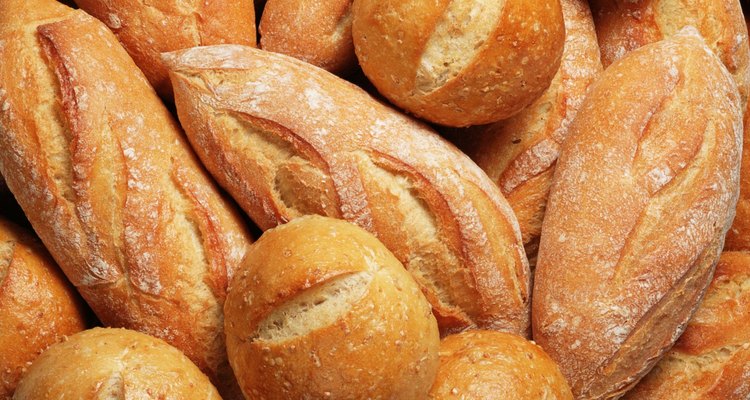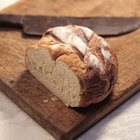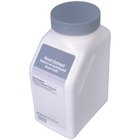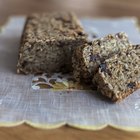
Jupiterimages/Comstock/Getty Images
Yeast is one of those few marvelous pantry staples with the gift of culinary alchemy, transforming itself before your eyes from tiny, benign granules into a bubbling, vivacious cauldron of life. But with life comes, inevitably, death. Yeast will not last forever, and even if its outward appearance doesn't suggest anything is amiss, you'll know you've got expired yeast when your bread dough fails to rise or your biscuits come out like hockey pucks. Know the shelf life of your yeast and how to tell for sure whether it's still alive and you will avoid such kitchen catastrophes.
Shelf Life of Yeast
While many pantry staples will last well beyond their expiration dates, yeast is one of the few products with a "best by" date that requires close attention. Using expired yeast will result in the absolute failure of many baked goods recipes. Whether regular active or instant, dry yeast may last up to four months, but once the expiration date has passed it is essential to check your yeast for freshness before use in order to avoid disappointing results.
How to Store Yeast
Proper storage is essential to maximize the shelf life of yeast. Store unopened containers in a cool, dry place; keep opened yeast in an airtight container in your refrigerator. To further guarantee that your yeast survives to its full potential, store it in the freezer; simply keep it in its original container or, if you buy in bulk, transfer it to an airtight container once you've broken the vacuum-pack seal. Storing yeast in the freezer may extend its shelf life well past the four-month mark, so check it for freshness before you use or discard.
Check for Freshness
When making a yeast dough, using fresh yeast is absolutely essential. To confirm that your yeast is still alive and well, dissolve 1 teaspoon sugar in 1/2 cup warm water in a 1-cup liquid measuring cup, then stir in one packet or 2 1/4 teaspoons of dry yeast. After 10 minutes, the mixture should have bubbled and risen to the 1-cup mark. If your yeast fails to hit this mark, it is no longer active and should be discarded.
Substitutes for Yeast
Yeast is a unique type of leavener with results that cannot be perfectly duplicated by other means, but you can try to use substitutes. If you've found your yeast has expired and you wish to proceed with your recipe, try using equal parts baking soda and lemon juice to equal the amount of yeast called for by the recipe -- usually one packet, or 2 1/4 teaspoons, of yeast. Another option is to use an equal amount of double acting baking powder. These substitutes may not work for all recipes, but they're worth a try if you're willing to experiment.
Related Articles

Differences Between Brewer's Yeast & ...

Can You Proof Yeast in Warm Milk?

Why Bread Dough Does Not Rise

Can Fast Acting Yeast Be Used in Place ...

How to Store Baking Soda Long-Term

How Long Will Vital Wheat Gluten Last?

Does Flour Expire?

Can You Refrigerate Homemade Yeast ...

How to Make Breadmaker Bread Less Dense

Can I Substitute Bleached for ...

Does Bread Expire?

How to Revive a Sourdough Starter Gone ...

How Does a Bread Maker Work?

How to Make a Bread Starter

Can You Substitute Yogurt for Milk in ...

How to Grow Bread Yeast

I Forgot to Put the Egg in the Banana ...

What Is the Finger Test for Bread Dough?

How to Replace Yeast With Baking Soda & ...

Gluten-Free Bread Without Eggs
References
Writer Bio
Kelly McCoy has been writing for lifestyle blogs and online publications since 2010, specializing in recipes and techniques for the home cook. She holds a B.A. from Boston University and J.D. from the University of Hastings College of the Law in San Francisco.
Photo Credits
Jupiterimages/Comstock/Getty Images